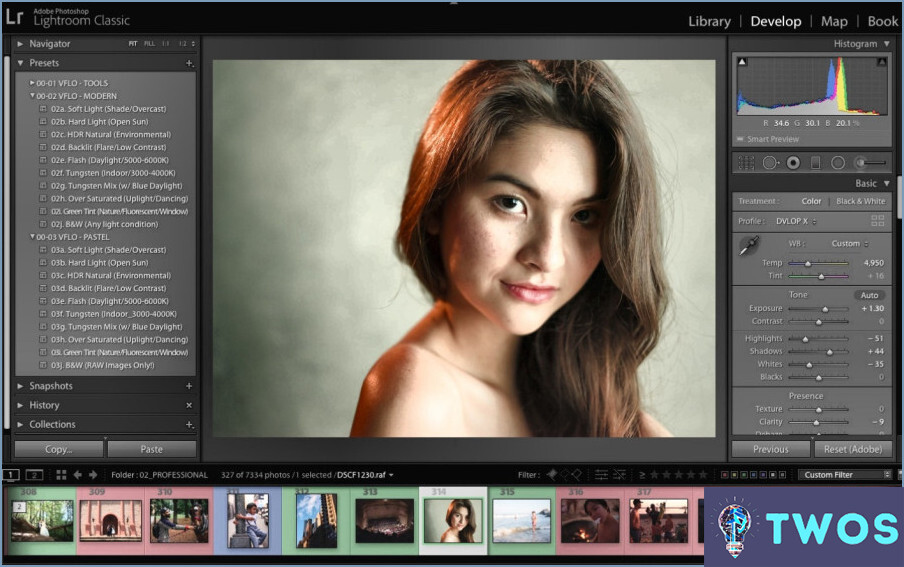What Is Flow In Lightroom?

Flow in Lightroom is a powerful tool that offers you the ability to subtly or dramatically alter the aesthetic of your images. It's a feature that's primarily used in conjunction with the adjustment brush, gradient filter, or radial filter tools.
The Flow slider essentially controls the speed at which the effect of the selected tool is applied. A lower flow rate, say 10%, applies the effect gradually, allowing for a more controlled and precise application. This is particularly useful when you're aiming for a softer, more nuanced look. On the other hand, a higher flow rate, such as 100%, applies the full effect of the tool immediately and uniformly, which is ideal for more dramatic changes.
Here are some key points to remember about Flow in Lightroom:
- Flow works in tandem with the Density slider. While Flow controls the speed of the effect application, Density sets the maximum limit of the effect that can be applied.
- Flow is cumulative. This means that if you set the Flow at a lower rate and brush over the same area multiple times, the effect will build up until it reaches the limit set by the Density slider.
- Flow is perfect for creating gradual transitions and blending effects seamlessly into your image.
In essence, Flow in Lightroom is a versatile feature that gives you a high degree of control over the look and feel of your images, allowing you to achieve everything from subtle enhancements to dramatic transformations.
What is opacity in Lightroom?
Opacity in Lightroom is a slider that provides control over the visibility of an image. It's a powerful tool for photographers and designers alike. When the opacity is increased, the image becomes less visible. This allows for nuanced adjustments, enabling the creation of layered effects or subtle changes in exposure.
- High Opacity: Less of the image is visible.
- Low Opacity: More of the image is visible.
This feature is particularly useful when blending images or applying effects in a non-destructive manner.
Can you draw a line in Lightroom?
Lightroom's line drawing capabilities are not uniform across all versions, with the availability of features influencing the process. To draw a line, the Pen tool is typically used. This tool can be found in the toolbar. Once selected, you can click and drag in the desired location to create your line. The line's properties can be adjusted as needed, allowing for customization of its appearance. Remember, the process may vary slightly depending on the specific version of Lightroom you're using.
Does Lightroom have magic wand?
Lightroom does not feature a "magic wand" tool. Despite this, it's equipped with a plethora of tools and features designed to enhance your photo editing experience. These include:
- Adjustment Brush: For detailed edits.
- Graduated and Radial Filters: To apply effects to specific areas.
- Spot Removal: To erase blemishes or unwanted objects.
These tools, among others, provide a comprehensive suite for photo editing, even without a "magic wand".
What is a flow brush?
A flow brush is a distinct paintbrush characterized by its long, flexible handle and uniquely arranged bristles in a circular pattern. This design facilitates the creation of smooth, even surfaces, making it an ideal tool for painting walls or ceilings. Key features include:
- Long, flexible handle: Enhances reach and maneuverability.
- Circular bristle arrangement: Ensures uniform paint distribution.
Where are brushes in Lightroom?
In Lightroom, brushes can be found in two key locations:
- Brush Picker: This is a dropdown menu that allows you to select different brush presets.
- Brush Panel: Here, you can customize brush settings to your liking, creating unique effects.
These tools offer a wide range of possibilities for enhancing your photos.
Can you use brushes in Lightroom CC?
Absolutely, brushes can be utilized in Lightroom CC. They serve as a powerful tool for making selective adjustments to parts of your image. However, it's crucial to note that compatibility issues may arise. Some brushes might not function optimally with specific features or cameras. Therefore, always ensure the brushes you're using are compatible with your setup to achieve the best results.
What is the difference between density and flow?
Density refers to the mass of a substance divided by its volume. It helps us understand how tightly packed the particles are in a given space. On the other hand, flow relates to the speed at which a fluid moves through a channel or pipe. It measures the rate of movement. In summary, density focuses on the concentration of matter within a given volume, while flow concentrates on the speed of fluid movement. Understanding these concepts is crucial in various fields, such as physics, engineering, and fluid dynamics.
Deja una respuesta

Artículos Relacionados